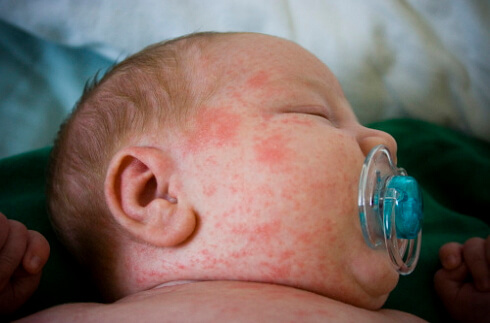Contact allergy: causes, symptoms, diagnosis, treatment and prevention
 Contact allergy or contact-allergic dermatitis - this is a skin lesion.It appears due to the contact of skin with sensitizing agents, but develops as a result of a delayed type hypersensitivity reaction.Pathology is more often diagnosed in young and middle-aged people, but the disease is also fixed in children.
Contact allergy or contact-allergic dermatitis - this is a skin lesion.It appears due to the contact of skin with sensitizing agents, but develops as a result of a delayed type hypersensitivity reaction.Pathology is more often diagnosed in young and middle-aged people, but the disease is also fixed in children.
Classification
Important: with There are compounds that are not allergens completelyCan provoke a hypersensitivity reaction.The pathological reaction in this case is a consequence of chemical damage to the skin. There are two main manifestations of the pathology:
- contact urticaria;
- photo contact dermatitis.
The following forms of contact dermatitis are clinically distinguished:
- acute;
- subacute;
- chronic.
Contact allergy is usually characterized by acute course, but there are also chronic forms.Chronic process is typical for people who, due to circumstances, do not avoid regular contact with an allergic factor.
Reasons for
Pathological manifestations develop in humans as a result of the classical delayed-type hypersensitivity reaction. Sustained-type allergic reaction scheme: 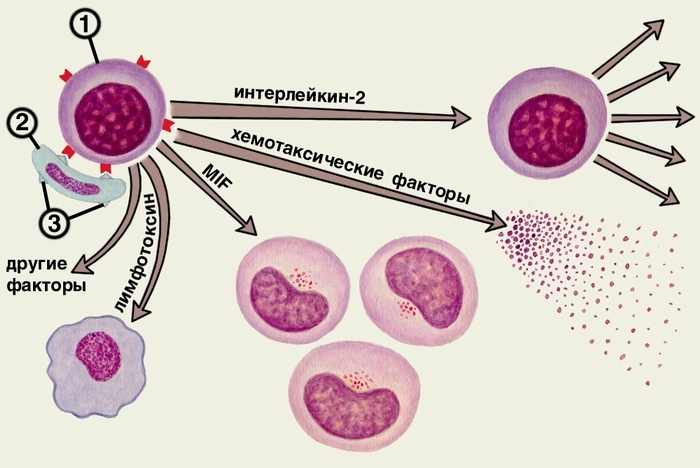 After formation of a complex consisting of sensitized lymphocytes( 1 in the scheme) and target cells( 2 in the scheme) containing the allergen( 3 in the scheme), interleukin-2 lymphokines stimulating B-Lymphocytes, chemotactic factors that cause leukocyte chemotaxis, factors that inhibit the movement of macrophages( MIF) and cause their accumulation, as well as lymphotoxins that damage adjacent cells.
After formation of a complex consisting of sensitized lymphocytes( 1 in the scheme) and target cells( 2 in the scheme) containing the allergen( 3 in the scheme), interleukin-2 lymphokines stimulating B-Lymphocytes, chemotactic factors that cause leukocyte chemotaxis, factors that inhibit the movement of macrophages( MIF) and cause their accumulation, as well as lymphotoxins that damage adjacent cells.
Contact allergy occurs only in patients with sensitized( specific to a specific substance) immune system cells - T-lymphocytes.In most cases, the contact allergy develops in response to completely harmless chemical compounds that do not cause pathological skin reactions in other people.
The most common substances that can cause contact allergy are:
- plants containing sensitizing components( tulips, chrysanthemums, etc.);
- metals( in particular - part of the "stainless steel");
- preservatives and stabilizers present in cosmetics;
- dinitrochlorobenzene( a component of hair dye);
- formalin;
- polymers( natural and synthetic).
Important: , , as well as metal alloys, the , , in particular , , is part of the dentures. 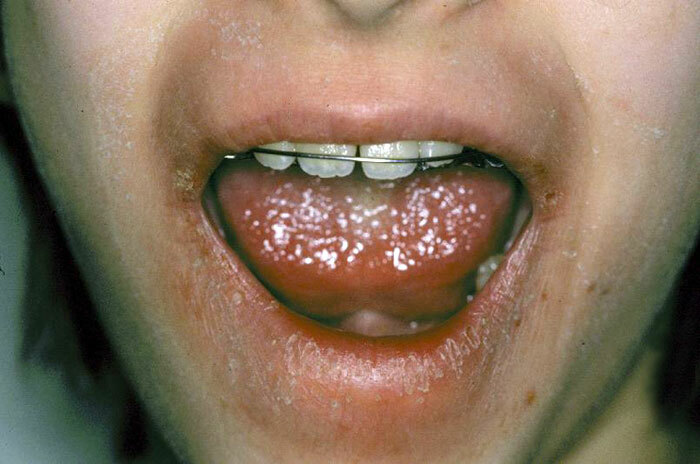 Pharmacological agents most often provoke contact dermatitis:
Pharmacological agents most often provoke contact dermatitis:
- local anesthetics( painkillers);
- antiseptics;
- antibacterial drugs.
Note: is often characterized by a characteristic skin reaction to latex. Phototoxic( photocontact) dermatitis develops when a certain allergen activates under the influence of ultraviolet radiation( in particular - under the influence of sunlight).
Clinical manifestations of contact allergies
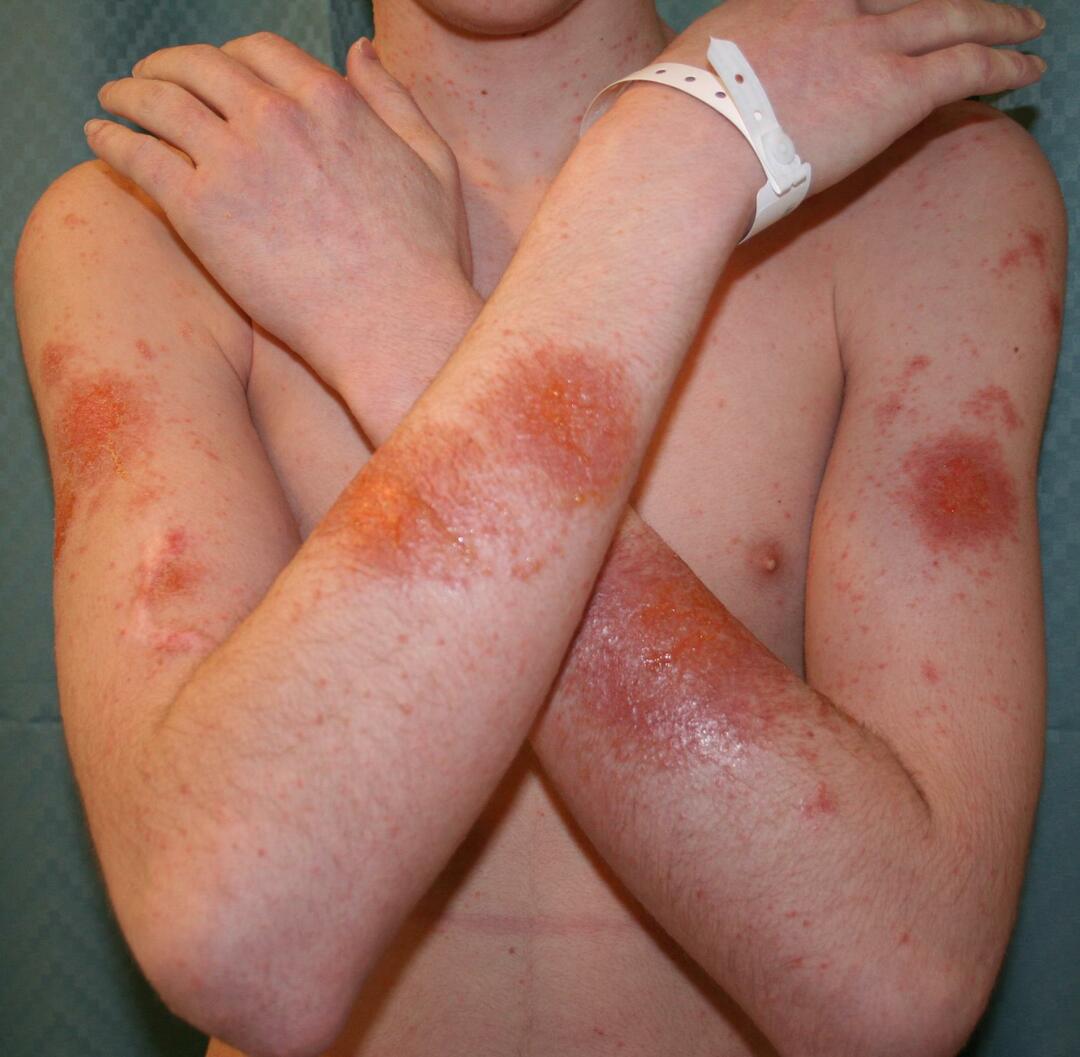
From skin contact with the allergen to the first local symptoms, usually passes from 12 hours to 3 days( depending on the sensibilization of the body and the strength of the allergen).In the area of contact, there is marked hyperemia( redness) and swelling.Almost immediately, papules and vesicles of various sizes are formed, which are opened, leaving erosive erosion.
In severe process, necrosis of the skin is not excluded.As the inflammation subsides, crusts and scales are formed.For the chronic course of contact allergies, a symptom of lichenization( thickening of skin areas with augmentation of the pattern) and peeling are characteristic.
The acute form manifests itself by the presence of the following clinical signs:
-
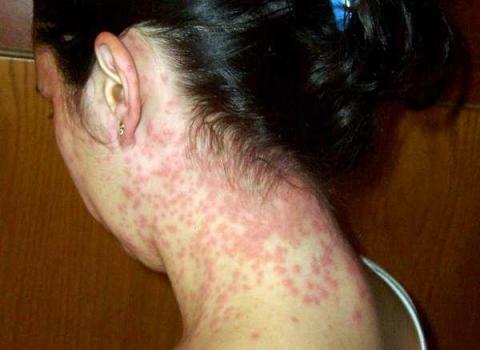 erythema( redness) and itching;
erythema( redness) and itching; - papules;
- vesicles( vesicles);
- erosion;
- crusts;
- peeling.
Sequence of appearance and development of symptoms in the chronic form of contact allergy:
- papules;
- peeling;
- lichenification;
- escort( injuries when combing).
Important: The most severe forms of pathology can be accompanied by a febrile reaction, headache and chills.
Photo-contact dermatitis is manifested in the same way as "classic" allergic.For contact urticaria, the appearance of eruptions of urticarous nature on the skin is characteristic.In addition, the symptomatology can be acute dermatological in nature or manifest as a contact eczema.
Contact allergies in childhood
At an early age, the body is more susceptible to allergens.The predisposing factor to the occurrence of contact-allergic dermatitis are scratches and abrasions;Through the injured skin, the allergen acts in an "enhanced mode".
The most common allergens that contribute to the occurrence of symptoms of contact allergies in a child are:
-
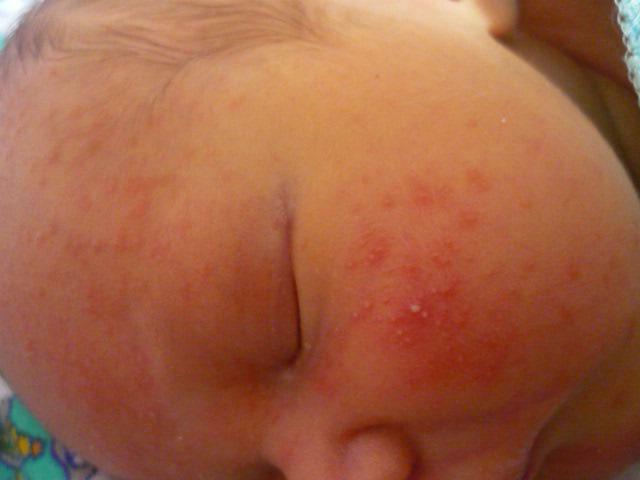 pets;
pets; - indoor plants;
- costume jewelery( contains polymers and metal alloys);
- clothing( mainly - from synthetic and semi-synthetic fabrics);
- personal care products;
- aerosol flavors;
- household chemicals.
Allergy to contact lenses
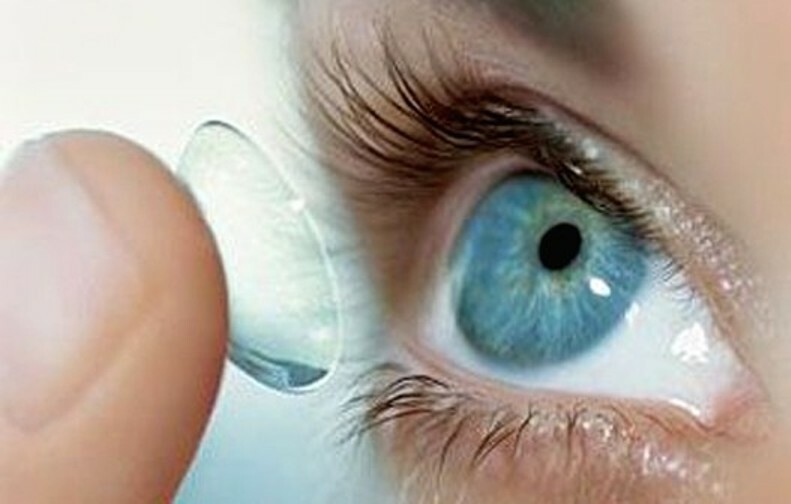 At present, allergies to contact lenses are quite common.It must be differentiated from a pathological reaction to other stimuli, in particular pollen from plants.To accurately determine the cause of hypersensitivity, it is recommended to consult with an ophthalmologist and an allergist.
At present, allergies to contact lenses are quite common.It must be differentiated from a pathological reaction to other stimuli, in particular pollen from plants.To accurately determine the cause of hypersensitivity, it is recommended to consult with an ophthalmologist and an allergist.
Important: lenses from high-quality expensive material hypersensitivity reaction can not provoke.
In many cases, there is a reaction not to the optical devices themselves, but to solutions that are used to care for them. Symptoms of contact allergies to lenses are:
- redness around the eyes;
- feeling of discomfort;
- itching in the eyes( not always).
Diagnosis
Recommended to read:Contact allergy is an immunopathological disease, and therefore its diagnosis should be carried out with the direct involvement of a number of specialists - including an immunologist and dermatologist.
Important: , this disease varies from 1% to 2% of the population in different regions.Prevalence of contact allergies is higher in industrialized countries.
One of the most common methods for establishing an allergenic factor was the injection of "prick-test", as well as the application tests of the same name to detect a skin reaction of a patient to a particular substance.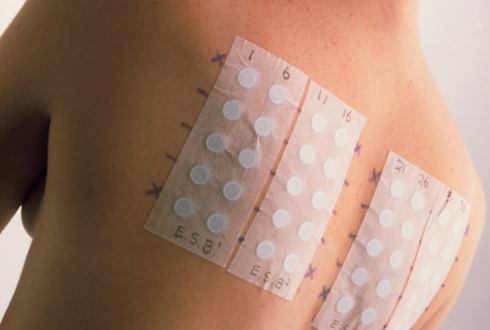 For the application test the material is applied on a dry surface of the skin( on the shoulder, forearm or between the shoulder blades) for a period of 2-3 days.To determine the sensitizing component, the patient is assigned a blood test.When it is present, immunoglobulins A, M and G are detected in the plasma. The purpose of the study is to determine the immune status and to determine the presence of primary or secondary immunological pathology.
For the application test the material is applied on a dry surface of the skin( on the shoulder, forearm or between the shoulder blades) for a period of 2-3 days.To determine the sensitizing component, the patient is assigned a blood test.When it is present, immunoglobulins A, M and G are detected in the plasma. The purpose of the study is to determine the immune status and to determine the presence of primary or secondary immunological pathology.
Treatment of contact dermatitis
Recommended to read:Medication
Treatment of contact-allergic dermatitis should be carried out after careful examination and under the supervision of the attending physician.Remember that not always reddening of the eyelid skin, itching and other seemingly typical symptoms of contact allergy are a manifestation of this disease.Do not immediately start using common eye drops( "Vizin", etc.) or the use of desensitizing agents.The key to successful treatment of any disease is to eliminate the causes that caused it.
Regular use of antiallergic drugs is useless, if the periodic contact with the allergenic factor is not completely excluded.As the allergen is established and contact with it is discontinued, a set of therapeutic measures is carried out.Locally shown are cool lotions or the application of compresses with Burov's liquid.The presence of severe symptoms of inflammation in contact allergies may require the use of topical glucocorticosteroid agents( as directed by a doctor).Course therapy usually lasts up to 2 weeks, and the frequency of reception is 2 times during the day.If hormonal treatment does not have a positive effect, its duration can be increased at the discretion of the treating doctor.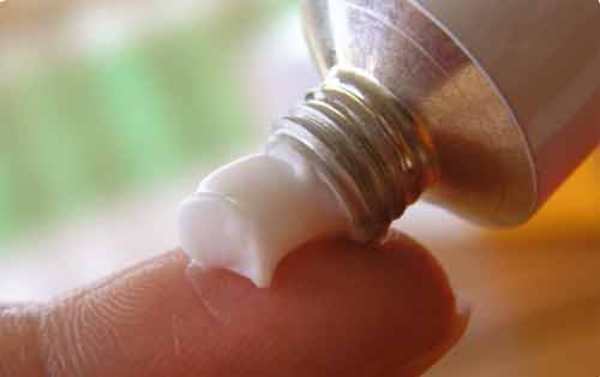
Note: overuse of glucocorticosteroids sometimes causes side effects.
Patients with contact allergy show antihistamines.Pharmacological preparations of this group make it possible to significantly reduce puffiness, get rid of itching and other symptoms of the disease.Among the most common antihistamines are "Zirtek", "Fenistil", "Erius", etc.
Folk remedies for the treatment of contact allergies
Traditional medicine offers a number of products intended for oral and topical application.As an internal remedy it is useful to drink a decoction of celery every day after eating( 100 ml each).  For the treatment of itchy skin, decoctions of the following medicinal plants are effective:
For the treatment of itchy skin, decoctions of the following medicinal plants are effective:
- celandine;
- St. John's wort;
- series;
- calendula( flowers).
With the inflammatory process, juices of fresh apples and cucumbers help to fight.To reduce skin symptoms, dairy products, kefir and sour cream, also allow.They need to be applied to clean skin 2-3 times a day until the signs of allergy subsided.
Important: should only be resorted to folk remedies after consultation with the attending physician.In addition, "grandmother's recipes", as a rule, are ineffective in the treatment of contact allergies caused by particles of plant origin.
Prophylaxis of contact allergy
 Specific prevention of contact allergy is not developed, which, however, applies to any other types of allergies.Excessive reaction to a given substance can be genetically conditioned, i.e., transmitted by inheritance.In addition, the allergy in a number of cases develops with time, as a result of contact with various chemicals, plant particles, contact lenses, etc. Even if you try to create almost "sterile" conditions, it is possible to develop a contact allergy to ordinary house dust.
Specific prevention of contact allergy is not developed, which, however, applies to any other types of allergies.Excessive reaction to a given substance can be genetically conditioned, i.e., transmitted by inheritance.In addition, the allergy in a number of cases develops with time, as a result of contact with various chemicals, plant particles, contact lenses, etc. Even if you try to create almost "sterile" conditions, it is possible to develop a contact allergy to ordinary house dust.
But the likelihood of developing a hypersensitivity reaction can be reduced.Here are some recommendations:
- If you wear metal jewelry - watch for the quality of the metal.When the reaction occurs even on noble metals of high quality - give up jewelry in general.
- Minimize the use of cosmetics.
- Try to use less household chemicals.For washing it is advisable to choose "children's" hypoallergenic powders.
- If an allergy causes a denture, be sure to contact your dentist.Metal elements can be made from a different alloy, and the basis of a removable prosthesis is made of hypoallergenic plastic.
- Avoid contact with plants that you are allergic to.Take special care during the season of their flowering.
- When working in a garden area with fertilizers and various "chemistry, be sure to wear strong rubber gloves and wear clothes with a long sleeve.
- With diagnosed photocontact dermatitis, try to be less exposed to the sun, especially in the summer, and also at the hours when it is at the peak of activity - from 11:00 to 15:00.Avoid visiting solariums.
Remember that contact allergy symptoms occur only when the skin and( or) the mucous membranes directly contact a certain substance.Therefore, you can avoid possible troubles by eliminating this contact!
Plisov Vladimir, physician-phyto-therapeutist


